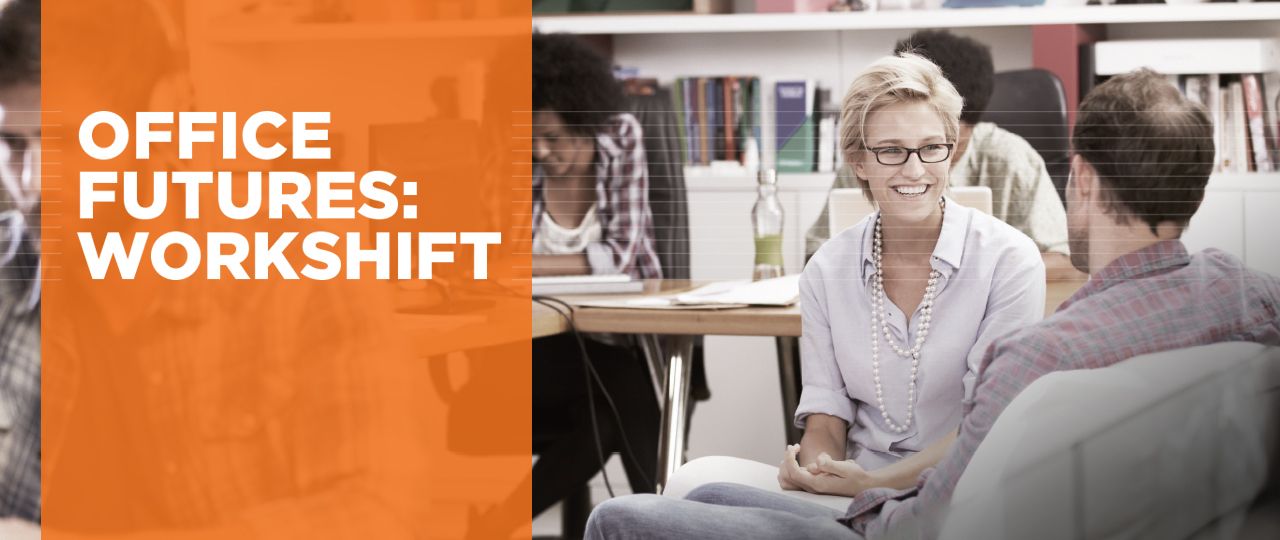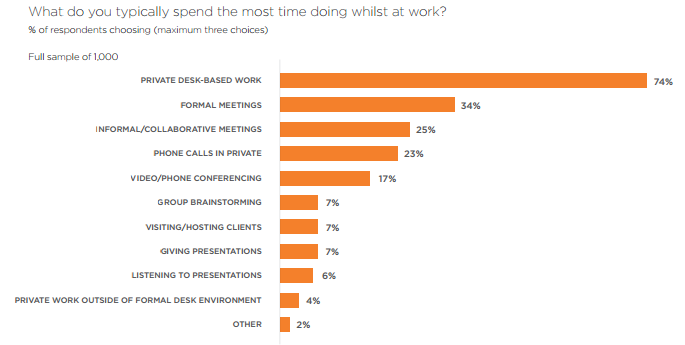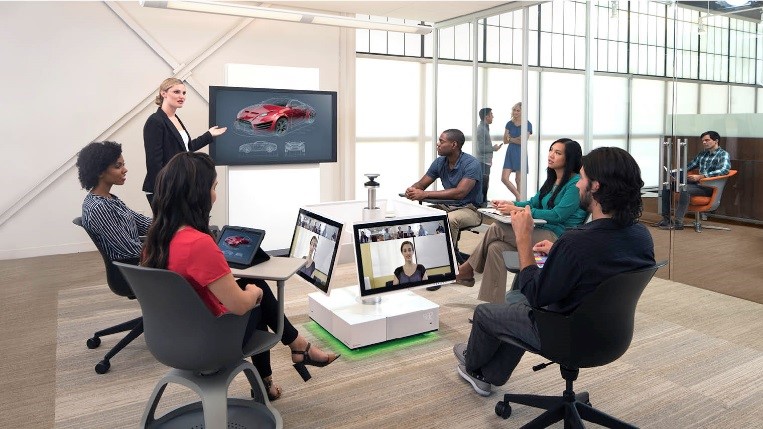
In our Offices Futures research we found that ‘private desk-based work’ and ‘formal meetings’ remained the backbone of the office environment for most workers.
However, third on our list of typical office employee activities were ‘informal/collaborative meetings’.
So although not the most fundamental task that employers need to support, these kind of meetings – focused on generating ideas and actions outside of a strict agenda – are something that certainly shouldn’t be forgotten.

A key issue identified during the course of our research was that too many occupiers have gone down a design-led, rather than task-led, approach to their informal or collaborative space. Resulting in space that looks a lot of fun (although no doubt boredom would settle in eventually) but does very little to support actual working.
For example, bean bags, slides and games consoles might provide some light diversion, but in reality are not making much of a contribution to productivity. Google’s new offices at 6 Pancras Square provide a good case in point. Much of the office gimmickry for which the company had become known has gone, replaced by an office that is far from dull but more focused on providing productive and flexible workspace for employees, and helping to foster collaboration.
A good start to making informal meeting space effective is thinking about what staff actually want to use it for…
For example, is it a place to grab quick private conversations? In which privacy provision needs to be considered.
Perhaps it’s somewhere where staff need to gather round and discuss a project a on a computer screen? Then companies will need to consider whether the available tables need built-in touchscreens.
I could go on, but the point is that the functionality needs to come first.
Another key issue is flexibility. Meeting rooms are notorious for inflexibility. They are often booked-out but due to their fixed form, not in an efficient way. Two people in a room to fit six is a common scenario. If we want our informal meeting space to work effectively it needs to be able to adjust its layout to cater to changing demand during a working week. Modular furniture and movable walls are gaining ground as companies become more aware of their space inefficiencies and need for flexibility.
Our informal space will also need to adjust to changing technology and work patterns. For example, laptops are slowly phasing out fixed desktops as the work tool of choice, whilst Wi-Fi provision in offices has also entered the mainstream. If office workers increasingly take their tools into the informal workspace, than we need to question whether that space is able to accommodate it. For example, working with a laptop actually on your lap is not considered especially healthy. Does the furniture available help to accommodate this?
Video conferencing has been an under-utilised technology solution, owing to a low cost/effectiveness trade-off. However, we are travelling to the point where video conferencing is becoming both lower-cost, more mobile and more effective. Allowing to move from an expensive fixed asset, to one that can be moved around the office more easily. So again, we have technology that we need to try and incorporate into our informal office space.

Polycom© RealPresence Centro™
Looking forward then, it’s pretty clear that the evolution of our informal/collaborative space has a long way to go. Both from a workstyles perspective, being seen a professional and functional workspace, and in its ability to incorporate and make the most of new technology. What is encouraging is that we are already seeing occupiers treat this kind of space, and their employees’ use of it, increasingly seriously.
